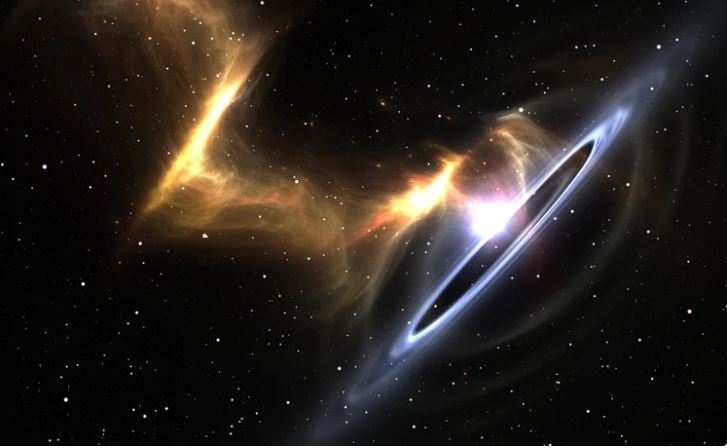


 11:53:40
11:53:40  2023-05-06
2023-05-06  818
818

Supermassive black holes are at the center of all large galaxies, including the Milky Way. These cosmic bodies weigh between 100,000 and tens of billions of times the mass of the Sun.
And if you've ever wondered how big these celestial bodies are, a new animation from NASA may give you the answer you're looking for.
A black hole is a region of space where the force of gravity is so strong that nothing, not even light, can escape. And the gravitational force is so strong because the matter has been compressed into a small space. These astronomical objects can be formed due to dying stars. The largest black holes in the universe are called supermassive (or supermassive) black holes.
More than 100 supermassive black holes have been confirmed. And in 2019, astronomers took the first image of giant black holes at the center of M87 and the Milky Way. They revealed a bright ring of hot gas orbiting a circular region of darkness.
Direct measurements, many of them made with the help of the Hubble Space Telescope, "confirm the existence of more than 100 supermassive black holes," said Jeremy Schnittman, a theoretical researcher at NASA's Goddard Space Flight Center.
"How do supermassive black holes become so big? When galaxies collide, their central black holes may eventually merge together," Schnittmann added.
A new animation released by NASA shows 10 supermassive black holes lurking at the center of their host galaxies, measured by the sizes of their shadows. The clip also contains a black hole in the Milky Way.
Starting with the sun, the images in the video are steadily zoomed out to compare the sizes of black holes to different objects in the solar system.
The black hole in the Milky Way is called Sagittarius A*, and it weighs 4.3 million suns, based on long-term tracking of stars in orbit around it. The diameter of its shadow extends about half the diameter of Mercury's orbit in our solar system.
In the video, as well as Sagittarius A*, a dwarf galaxy dubbed J1601 + 3113, which hosts a black hole with a mass of 100,000 suns, is shown.
The clip shows two monstrous black holes in the galaxy known as NGC 7727, located about 1,600 light-years away. One of the two black holes weighs about 6 million solar masses, and the other weighs more than 150 million suns.
Reality Of Islam |
|

Cameras hav

For years,

New scienti

This is the
 9:3:43
9:3:43
 2018-11-05
2018-11-05
10 benefits of Marriage in Islam
 7:5:22
7:5:22
 2019-04-08
2019-04-08
benefits of reciting surat yunus, hud &
 9:45:7
9:45:7
 2018-12-24
2018-12-24
advantages & disadvantages of divorce
 11:35:12
11:35:12
 2018-06-10
2018-06-10
 6:0:51
6:0:51
 2018-10-16
2018-10-16
allah will not answer all your prayers
 6:56:28
6:56:28
 2022-01-01
2022-01-01
 8:39:51
8:39:51
 2022-09-23
2022-09-23
 2:5:14
2:5:14
 2023-01-28
2023-01-28
 2:2:13
2:2:13
 2022-10-08
2022-10-08
 6:14:3
6:14:3
 2023-01-18
2023-01-18
 11:11:59
11:11:59
 2023-02-01
2023-02-01
 6:14:17
6:14:17
 2018-06-21
2018-06-21
 5:41:46
5:41:46
 2023-03-18
2023-03-18
| LATEST |